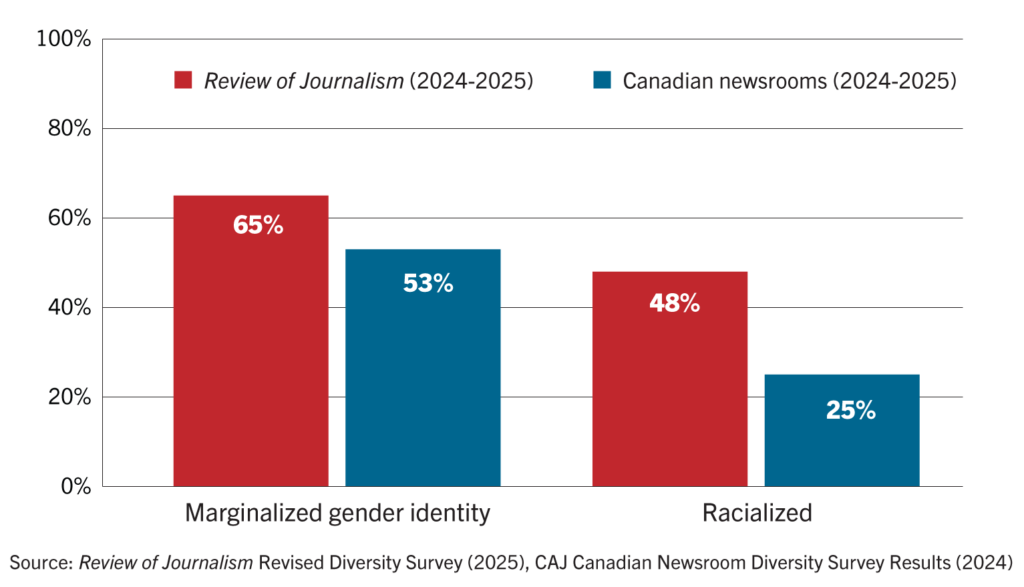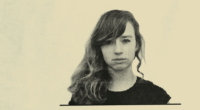How the Review newsroom compares to newsrooms across Canada

The Review of Journalism strives to create a workplace and publication that reflects the diversity of both our readers and the stories we tell. Every year, our masthead publishes an anonymous breakdown of the race, gender, sexuality, and disability representation of our staff. This annual summary allows us to track progress over time and compare our newsroom’s diversity with other Canadian journalism organizations, as tracked by the Canadian Association of Journalists (CAJ).
Other organizations are structured differently and collect data using practices that may differ from the Review’s. We include their data to illustrate how our diversity compares across the industry.
The Review staff consists of undergraduate and graduate students at Toronto Metropolitan University (TMU), alongside our instructor, teaching assistant, handling editors, consultants, and freelance contributors. A total of 46 out of 53 staff members completed our diversity survey, yielding an 87 percent response rate.
While the Review tracks a range of demographics, the CAJ does not include 2SLGBTQIA+ or disability representation in its publicly available survey results due to limited industry tracking. As a result, these categories are not reflected in our comparative data visualization. Within our newsroom, however, 28 percent of staff identified as 2SLGBTQIA+ and 24 percent as having a disability.
This year, we expanded our gender category to include marginalized identities beyond the binary. This change aims to provide more accurate representation.
The Review acknowledges that tracking methods have limitations, particularly when it comes to accurately representing some marginalized groups. We are constantly evolving our practices to be more inclusive, while ensuring our data remains comparable to previous years. We hope this approach helps hold both our publication and the industry accountable for fostering workplaces and storytelling that truly reflect the diversity of our readers and the communities we serve.
Note: All percentages are rounded to the nearest whole number.
Our newsroom falls short in Indigenous and physical disability representation, reflecting broader industry gaps. While diversity statistics provide insight, they don’t capture the full reality of newsroom equity.
We encourage readers to critically assess newsroom representation—including ours—and hold the industry accountable for more inclusive storytelling.
About the author
Chloe is in her final year of the Master of Journalism program and works on the Review’s senior editorial team. She is interested in audio-based journalism and stories that prioritize underrepresented voices. She’s interned at The Big Story Podcast and CBC’s Day 6.



